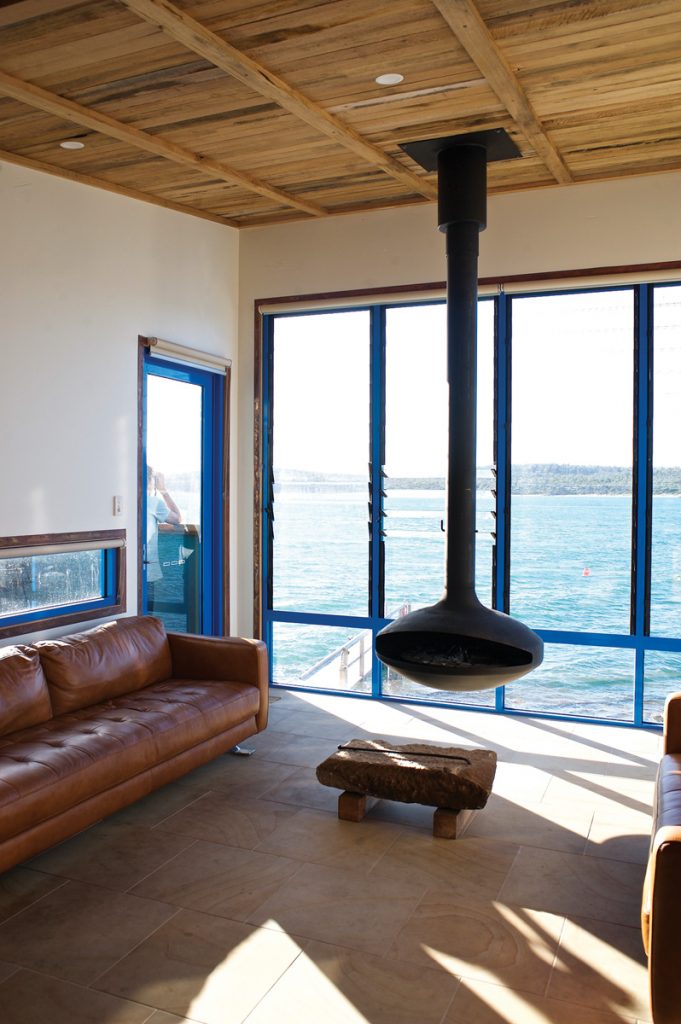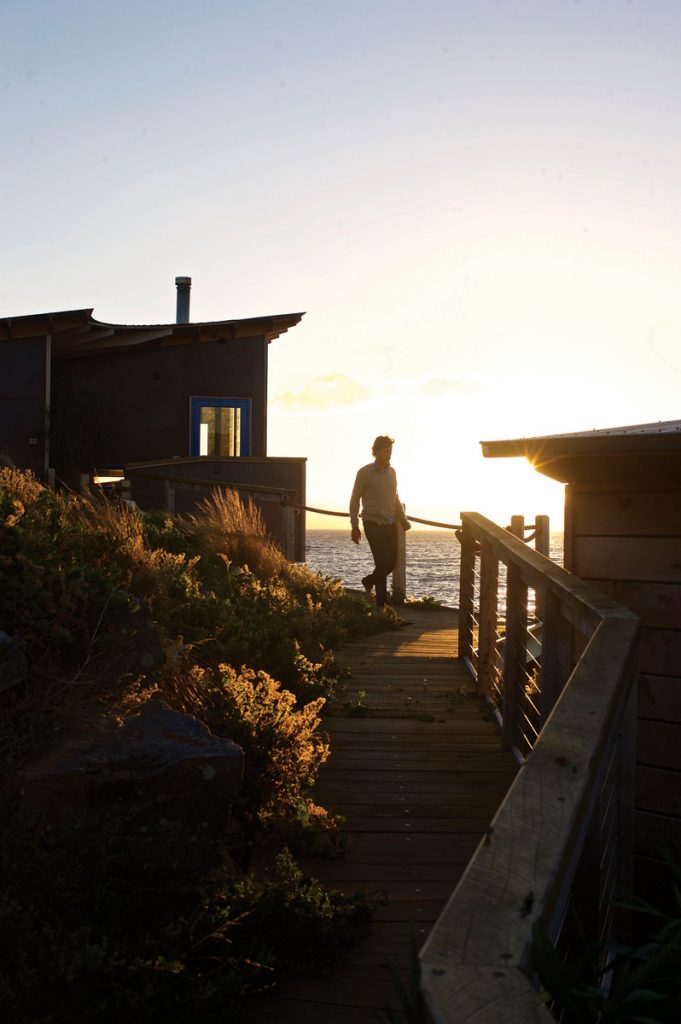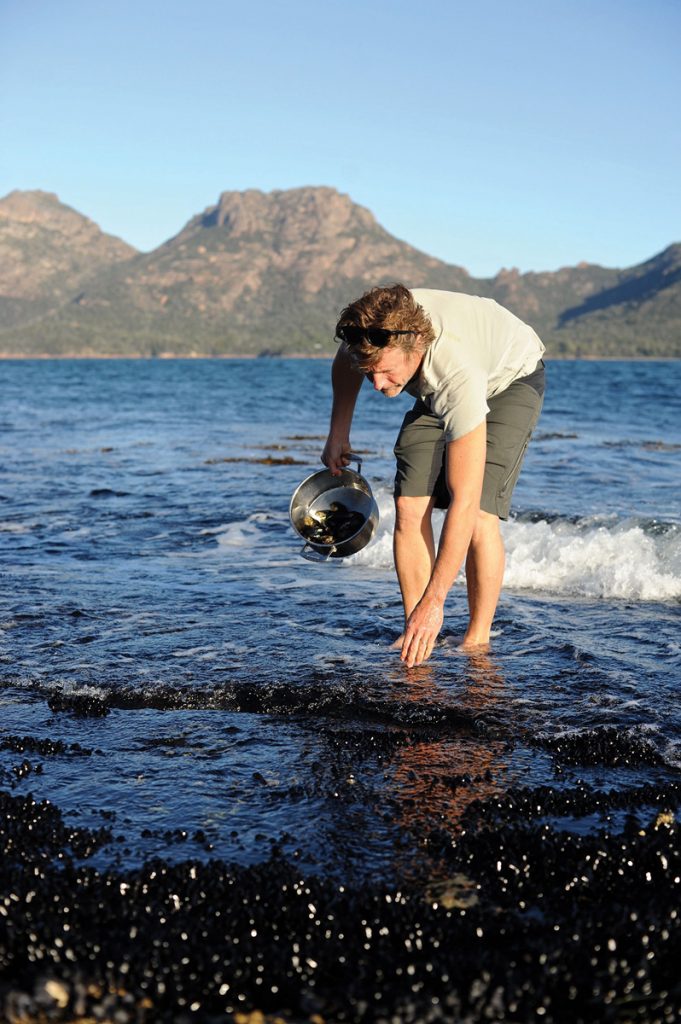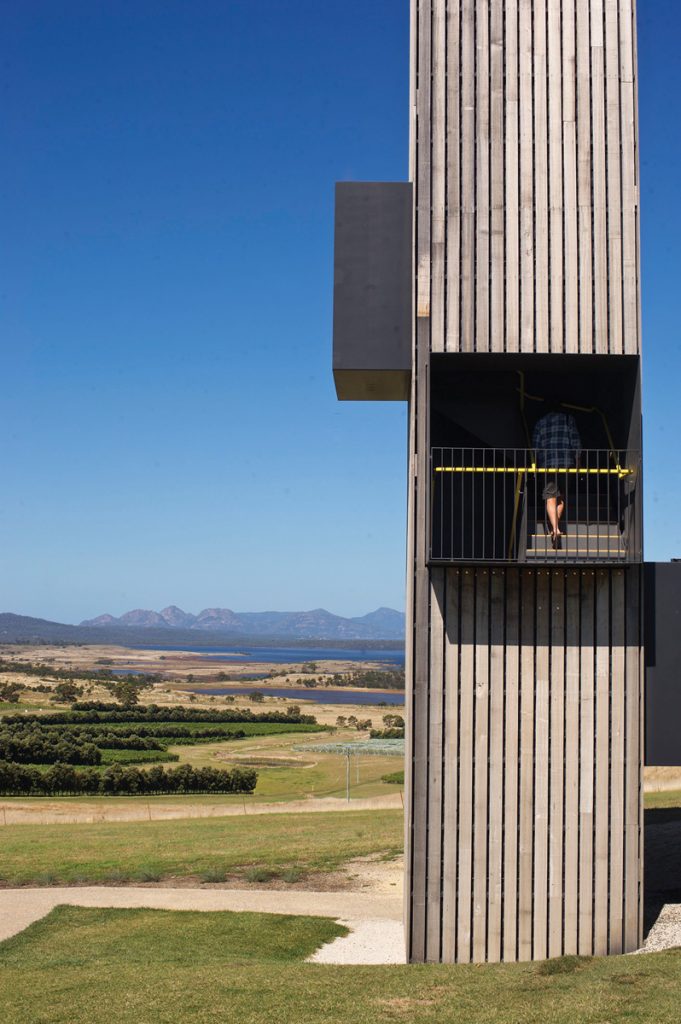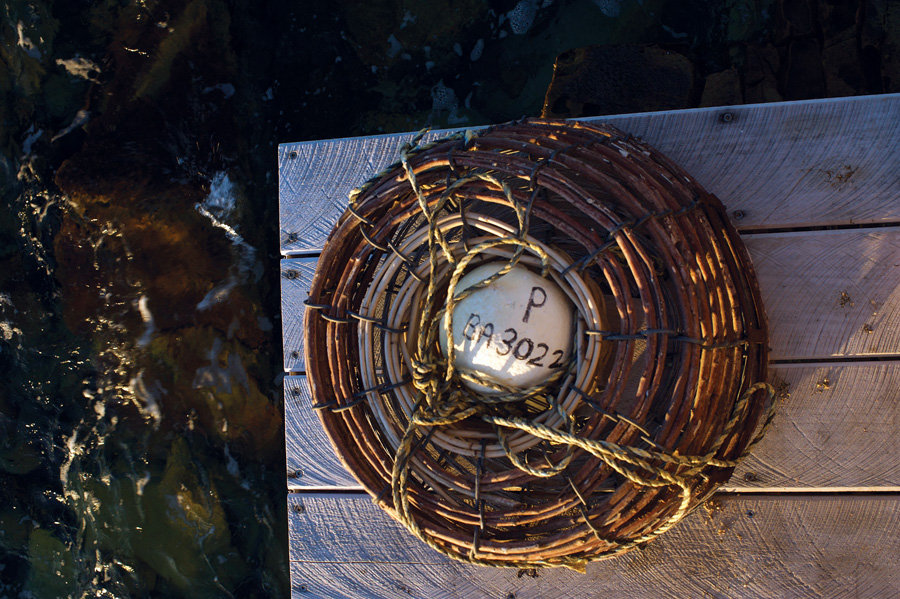Island Daze
Picnic Island proves too interesting to simply while away the day, with an abundance of activities and nearby beaches and mountains to explore.
Just when I thought I knew Tasmania’s East Coast, another gem was revealed during a recent visit in early autumn. A small privately owned island lies in the tranquil waters just off Coles Bay. What I love about Picnic Island is that everything is so unexpected. Where else can you drift off to sleep to the sounds of nesting penguins and burrowing mutton birds?
Picnic Island was purchased ten years ago by its current owner and after a lengthy planning process, approval was given to build visitor accommodation. Whilst the island is a mere 700 metres off Coles Bay township, the logistics of the build proved particularly complex, especially when the main transport was a runabout and the jetties were yet to be built.
To firstly achieve build approval, strict environmental, heritage and flora and fauna criteria had to be met. The 0.75-hectare island was once used to quarry Triassic sandstone until the late 19th century. It is a sensitive outcrop with low scrubland and grassland and is surrounded by rocky shores. Two buildings are nestled discreetly away from the view of the Coles Bay settlement and look south across Great Oyster Bay.
The intention of architect John Latham of Debox Architects was to draw on the classic Tasmanian boat shed vernacular. This simple and honest design is culturally familiar and also economical to build. The buildings’ curved roofing serves to place the structures snugly in the island landscape. One building contains four modest bedrooms whilst the kitchen and living area is higher up the low cliff.
It is tempting to simply explore the library and perch on the deck for the entire sun-drenched afternoon. Instead we head off to forage for mussels on the sheltered eastern shore. As you descend to the water’s edge The Hazards of the Freycinet Peninsula are revealed in their full majesty. We soon have plenty of mussels for a simple bouillabaisse and wander back to the kitchen via the top of the island.
The owner’s use of copper cladding is well conceived. In a short period the copper has oxidised and the building blends in with the seascape. The hardwood timber frame offcuts have been used to effectively line the ceiling and the floorboards are Californian redwood from a local farm. Colorbond roofing and aluminium powder-coated windows are chosen for the harsh marine conditions. The boardwalk is macrocarpa pine, which is ideal for this environment. Cooking and refrigeration is gas supplied. Solar power is used at this stage only to charge devices, and electricity for lighting is from the generator. The wastewater system includes low water composting toilets and a sullage tank and transpiration bed for greywater processing.
After dark we head across the boardwalk to the top of the island. Short-tailed shearwaters (mutton birds) can be seen diving in from the dark in preparation for nesting. During spring it is a raucous affair as penguins return to renovate burrows and fat fur-covered chicks screech to be fed.
The next day revealed an especially breathtaking dawn as an occluded cold front swept towards us. The urge to laze and read and ignore time pressures rose again. However, the autumn morning tempted us over to Wineglass Bay. With a longer visit there are many more beaches and mountains to explore across the Freycinet. And maybe there would be spare time to burrow into the book collection between fishing, snorkeling and hiking.


